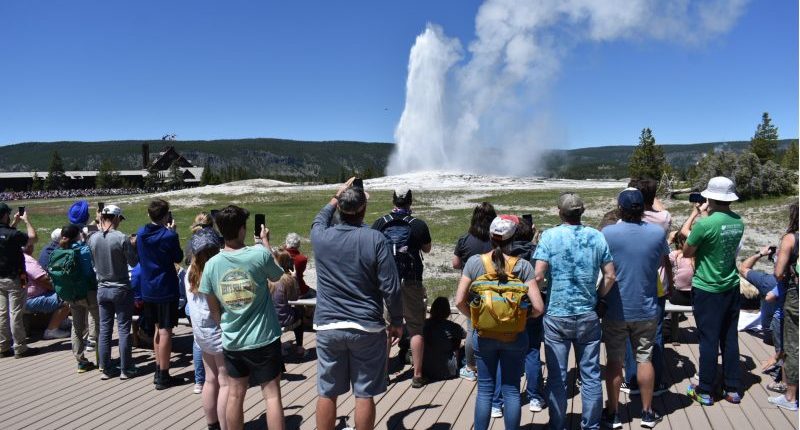Share this @internewscast.com

(NEXSTAR) — Following a record-breaking busy year and an already hectic start for certain parks, the National Park Service’s budget might see a cut exceeding $1 billion next year. Nonetheless, a new surcharge on certain visitors could potentially generate over $90 million, as outlined in the Department of the Interior’s budget proposal for the fiscal year 2026.
“I believe we are significantly undercharging international visitors,” Secretary Doug Burgum stated during a House Committee on Natural Resources oversight hearing earlier this month.
Presently, only 106 out of the 475 sites under the National Park Service’s management levy an entrance fee. Among the priciest are Yellowstone, Yosemite, and Zion, charging $35 per private vehicle. A few sites charge per-person fees (for visitors entering on foot or by bicycle), with the highest rate being $20 at those same parks. An annual membership, although not available at every fee-charging park, will cost a maximum of $70. Additionally, some parks require reservations for entry or to access particular attractions.
International visitors do not currently pay more to visit the national parks than U.S. residents.
During the hearing, Burgum pointed to other international venues where Americans and other non-resident tourists are charged more than locals, like the Galapagos Islands.
There, according to the Galapagos Observatory, non-Ecuadorian adults must pay a $200 entrance fee, in cash, to the Galapagos National Park. The entrance fee for children is $100. Meanwhile, Ecuadorian citizens over the age of 12 pay $30 while the fee for younger citizens is $12.
Citizens also have discounted or free admission to popular tourist attractions around the world. College-aged residents of the European Union have free access to several museums within member countries, including the Louvre and The Orsay Museum in Paris. Tourists pay over 20 times more to visit the Taj Mahal than local residents do.
It’s not uncharacteristic for venues and tourist attractions in the U.S. to charge out-of-towners more than locals, either.
Hawaii will begin charging a “Green Fee” tourist tax next year in order to generate funds for mitigating future environmental challenges the state expects to face. Chicago’s Field Museum offers discounted admission to city residents, for example. Residents of the state of New York are able to pay whatever they prefer to visit The Metropolitan Museum of Art, though they are required to pay at least one penny per ticket. Even Disney World and Disneyland offer deals for those who live near their parks.
“There could be a billion-dollar revenue opportunity without discouraging visitors,” Burgum said during the committee hearing. He did not expand on how the extra fee could bring in more than $90 million. An analysis by SFGate, using an estimate that 14.6 million international visitors went to U.S. national parks last year, determined that if the parks saw the same number of visitors in 2026, the necessary surcharge to reach the aforementioned budget goal would be about $6 a person.
The Interior Department did not immediately respond to Nexstar’s request for additional information on the proposed surcharge.
Meanwhile, the budget proposal is requesting $2 billion for the national parks, down more than $1 billion from the current budget. It would be the largest cut in NPS history, according to the National Parks Conservation Association (NPCA).
“It’s nothing less than an all-out assault on America’s national parks,” Theresa Pierno, president and CEO of the NPCA, said.














